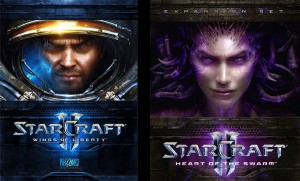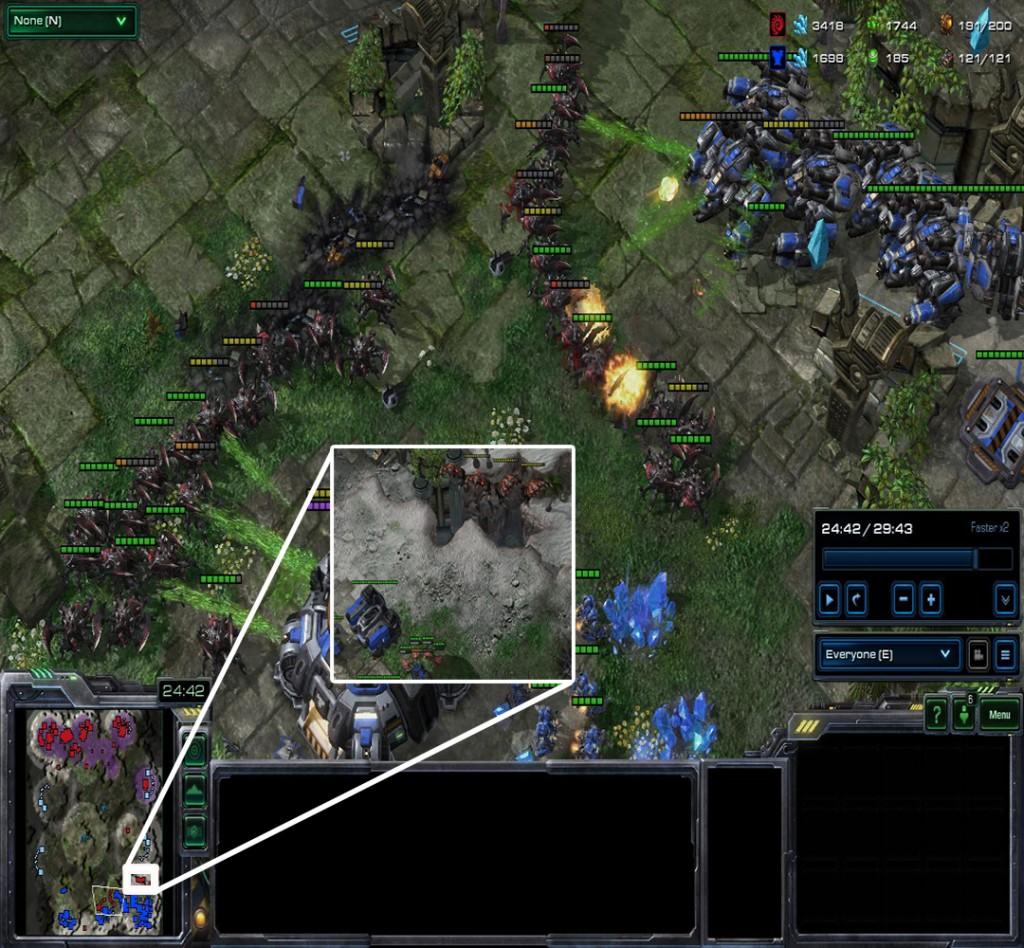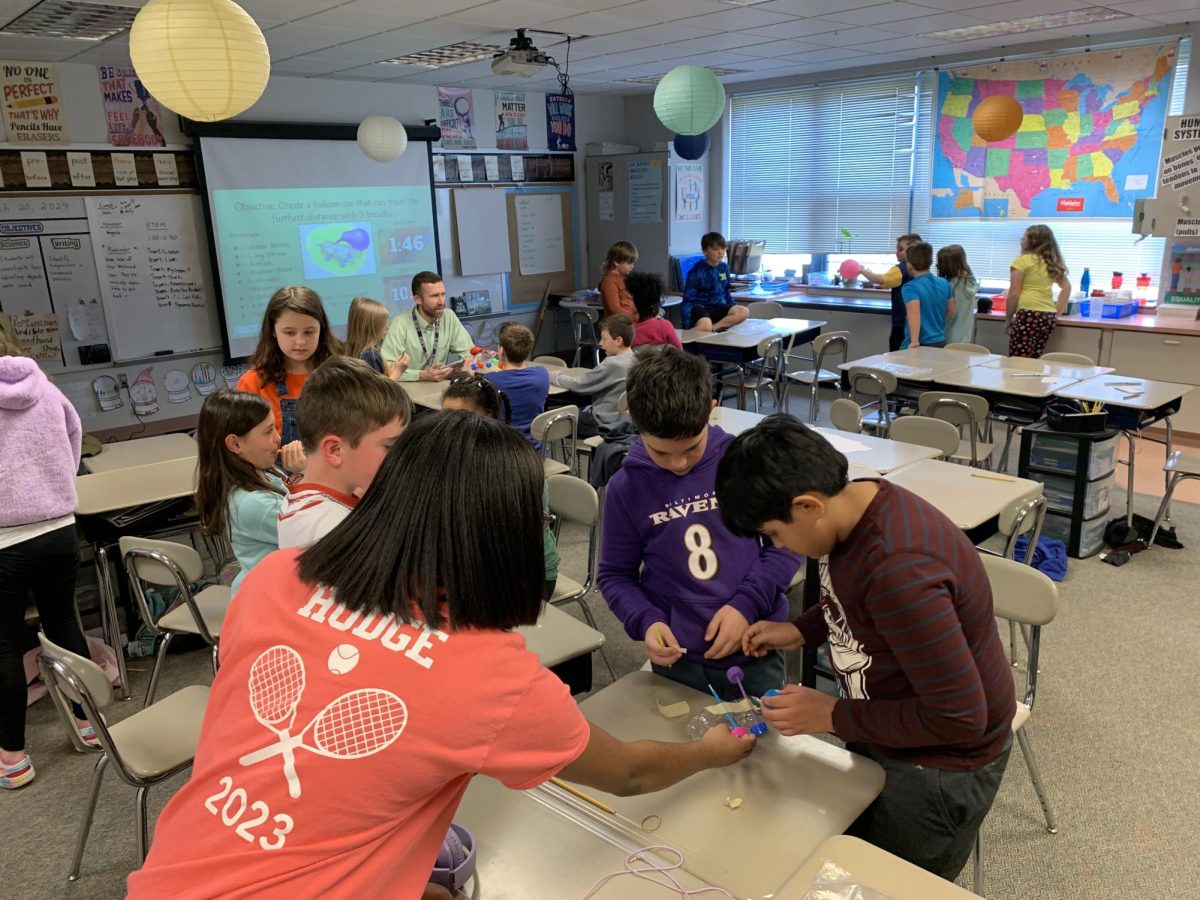
http://upload.wikimedia.org/wikipedia/en/2/20/StarCraft_II_-_Box_Art.jpg
http://upload.wikimedia.org/wikipedia/en/b/b8/SC2_Heart_of_the_Swarm_cover.jpg Cover art for Wings of Liberty and Heart of the Swarm features Jim Raynor, the main protagonist in Wings of Liberty campaign and Sarah Kerrigan, the main protagonist in Heart of the Swarm campaign.
Chess is the epitome of scientific study of the human cognition, but now cognitive scientists are looking to the video game Starcraft 2 for study.
The original Starcraft was initially released in 1998 by Blizzard Entertainment and revolves around three races: Terran, which is the typical humanoid race, Zerg, the biologically advanced arthropod race, and Protoss, the psionic photosynthetic race.
In 2010, the sequel to Starcraft, Starcraft 2, was released. The new game is to be released as a trilogy, introducing new units and technologies as expansion packs are released. The order of the trilogy is as follows: Wings of Liberty, Heart of the Swarm, and Legacy of the Void.
Overall, the game offers a compelling, universal war story campaign, intense competitive ranked or unranked matchmaking multiplayer, and an editor tool in which the player can manipulate the normal game mechanics to create a neat, fun, and relaxing twist to the elements of the game to share with the community. With these aspects, the amount of time and thought that players put into each of these brings their thought process in question.
Chess has been great for studying the question of why the human mind has excelled at individual tasks, but the brain still has a tough time when faced with multiple tasks. The game relates to Starcraft in the way that openings are usually the same, but then the players start to branch off in their own direction as they try to implement their strategy to overcome their opponent such as going for straight use of a powerful piece, taking on a powerful piece, or strategically countering each lesser piece before delivering the final blow. All of these tactics require a strategy and execution such as Starcraft.
Starcraft 2 is a real-time strategy game. The player oversees and commands every aspect of his base and army from an aerial view. The player utilizes the use of the mouse and keyboard to execute commands to buildings or units in an attempt to destroy his adversary.
When one begins a game, one must first build up a sufficient amount of workers to build an economy, gathering minerals and vespene gas. The multitasking begins pretty early when one builds their first unit production building. Now the player is faced with balancing a unit and worker and building production.
There are many options one must take into consideration when playing the game. Whether it would be building an army, advancing in technology, researching unit upgrades or expanding to the nearest next resource location, it all takes resources out of one’s hand, which will not allow for another factor for some time. Timing becomes critical.
Strategy is another critical factor when playing against an opponent. The way one approaches battles or a certain build order can be the deciding factor on whether you win or lose the conflict, or the game.
Senior Brad Haller explains his strategy for approaching battles.
“When it comes to inputting actions on the battlefield, there’s APM (actions per minute),” said Haller. “I usually go for a multi-pronged attack. With my APM, I can switch back and forth between my units and my opponent will have to split up his units to shut down my threats which requires him to act accordingly, given he can keep up. You’re really thinking for two people when you play Starcraft multiplayer.”

When one thinks for two people, they must take into consideration their opponent’s unit composition, the way they would react to a situation and their location all while the player is worrying about their own while the game clock is running and the opponent is progressing their own way. Chess has limited pieces and someone can mess up rather quickly.
Chess is a game of turns. Each piece has its unique advantages and counters one another. Starcraft, however, has no turns and no set time. The objective is to try to accomplish many different tasks at one time and to hope your opponent is not as quick.
The executive function of the brain manages most of Starcraft’s demand. Motor skills are needed to quickly click around the map and implement actions. Starcraft is an exercise in multitasking and constant decision-making.
Junior Gideon Miles who plays Random (chance to play any of the three races that particular game) explains what some mental aspects when playing against another player, or in-game are.
“There are a lot of things to take into consideration when you’re making decisions in-game. There’s [micromanagement], the individual management of units during a battle and [macromanagement] which is creating new buildings, expanding, training units and researching upgrades. It gets even more complex,” said Miles.
“Constant and adaptive thinking to counter the enemy’s units seeing how the game functions as a rock, paper and scissor technique with combat units. Then there’s reaction time which involves when your worker line is being attacked, how long it takes you to react to get your workers to safety and shutting down the threat or when your army is being destroyed, and how long it would take you to retreat to save some of them. The longest game I’ve had spanned around 50 minutes. Afterwards, I felt mentally exhausted and needed a break.”
Essentially, the person who wins is the one that makes the most moves. An elite player can execute 5 to 6 actions per second throughout the entire game.
People can look forward to the next chapter in the Starcraft 2 trilogy, Heart of the Swarm on 12 March 2013.








